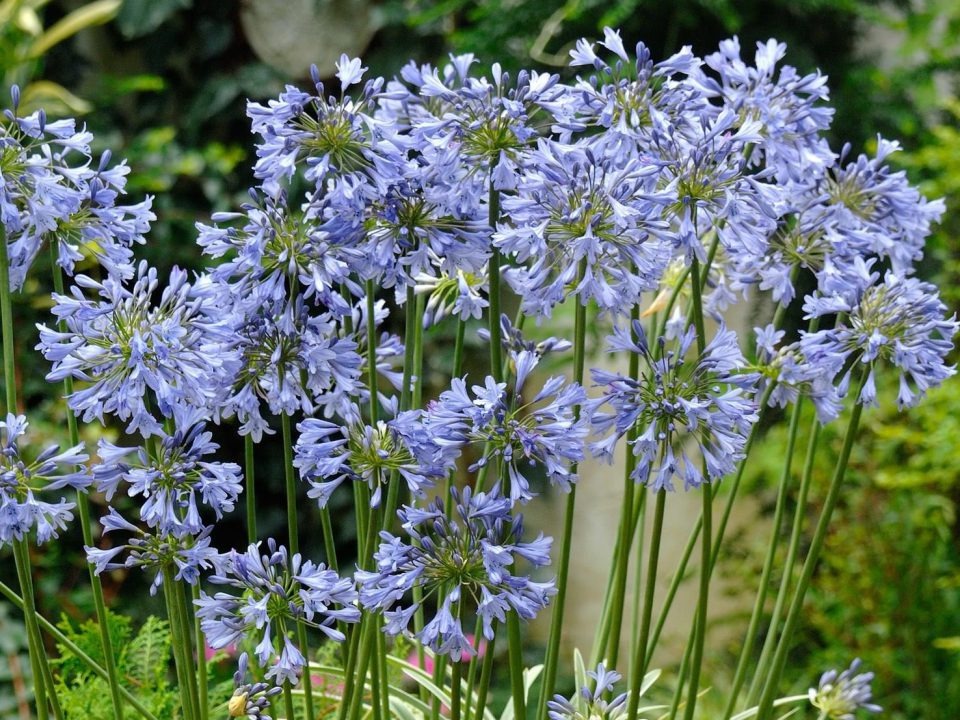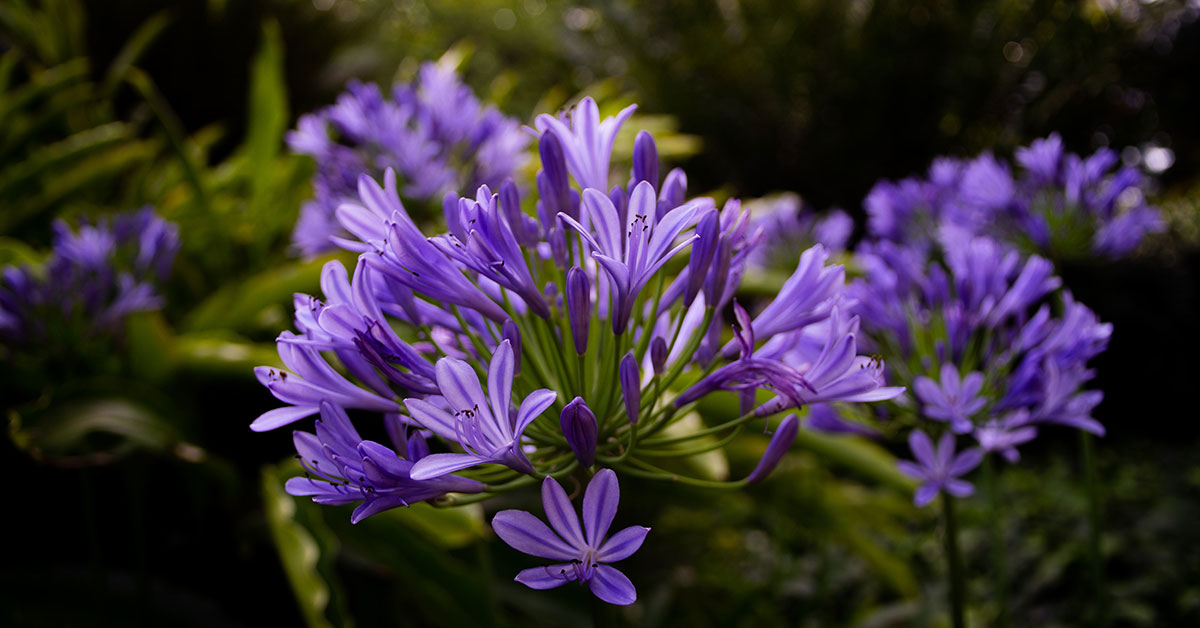Agapanthus is one of the most easily grown exotic plants available. If you can find the proper spot for it, then there are very few plants that can outshine the agapanthus plant. Their flowers rest on tall stems that nod elegantly over the plant’s leaves. The most common Agapanthus variant is blue. The flowers also bloom in big masses that make for a striking image.
Read more: These 22 perennials will thrive in your garden for decades
Growing Agapanthus
The best time to plant Agapanthus varies depending on the climate. For warmer climates, then it should be Fall or early winter. However, for cooler climates, the best time is spring, right after the threat of frost has passed. For the best effect, plant them in large groups in a spot that receives plenty of sunlight.
Here are some quick facts about the South African native plant:
- Latin name: Agapanthus africanus
- Other names: Lily of the Nile, African Lily
- Native to: Africa
- Invasiveness: Slightly
- Tenderness: Bulb, perennial
- Sun: Indirect, bright light indoors.
- Water: Water regularly in spring. Do not water in winter.
- Soil: Well-drained, rich.
- Hardiness zone: Zones 8 through 10
- When to plant: Fall/winter for warmer climates. After frost in spring for cooler climates.
- Spacing: 8”.
- Plant height: 9” to 30”.
- Bloom period: Winter
- Time to maturity: 2 to 3 years.
- Container friendly: Yes.
- Fertilizer: 10-10-10/5-5-5.
- Toxicity: Medium toxicity.
- Deer resistant: Yes.
- Pest resistant: Yes.
The best place for agapanthus is a big tub on top of a tray with wheels. This way you can easily move the plant around depending on the seasons. During summer, place it on your balcony to receive the sun and see its vigorous blooms. In winter, place it in a room with a colder temperature (about 45 degrees F) and subdued sunlight. When spring comes, the plant will start growing anew.
The plant has very basic requirements and is particularly fussy about sunlight. However, apart from that, it will guarantee to bloom through the entire summer.
Water
Starting in spring, water agapanthus regularly. Maintain regular watering until it blooms. However, in winter, when the weather becomes cool and the deadheads have died, avoid watering it completely. This is when the plant rests.
Sunlight
During agapanthus’ blooming season (beginning from early spring), the plant loves the sun. So place it in a spot where it can get as much sun as possible. However, when winter rolls around, it prefers a cool and dimmer place.
Soil
A rich potting soil based on peat is enough for agapanthus. The plant will do better if the soil is well-drained.
Fertilizing
As spring starts, and till the plant flowers, feed it a weak liquid fertilizer. Do not feed it while flowering and stop completely in winter. Its blooms are more vibrant if they are under slight stress.
Invasiveness
The agapanthus family spreads through rhizomes, so it can become invasive. However, the African lily has not been permanently categorized as invasive in any region till now. Just dig out the plant with its roots if you think it is becoming invasive.

Growing Agapanthus in containers
Agapanthus prefers its roots to be slightly bound, as such it favors being in containers. They are very suitable for container plantings in colder regions. Agapanthus usually makes for long-lasting and low-maintenance container plants.
For most agapanthus, there is no need to re-pot annually. However, to avoid overcrowding, you can divide them in spring. During winter, make sure they are protected. Also, do not let potted agapanthus dry out but avoid letting the soil become soggy too.
Care & tips
If you are in a warmer region, then you do not need to do much in the way of upkeep for the agapanthus plant. For winter regions, you will need to move the plant indoors to protect it during winter. Also, divide it about every 3 years to maintain its health and vibrancy.
Common problems
Agapanthus is a very resilient plant that is not known for pest infestations. However, be on the lookout for common signs like tiny webs. Also, it can get root rot if the soil is not well-drained.
Propagating Agapanthus
The division works fine for the plant. During spring, dig up a plant clump and simply plant it in a different container. Then, water it well and place it in a warm location. That’s all it takes to propagate the agapanthus plant.
The History Of Agapanthus
Not a lot is known about the origins of the agapanthus plant or how it proliferated around the world. The plant hails from South Africa and probably made its European debut sometime in the 17th century.
Uses for Agapanthus
South African traditional healers use the plant as a medicinal as well as a magical plant. They use it to treat a variety of ailments including heart diseases, coughs, colds, and paralysis. As ornamental flowers, agapanthus is usually grown in pots. They also make amazing cut flower arrangements. Gardeners can also choose to dry the seed heads to enjoy the plant throughout the year.
Even if the plant is not as toxic as the lily, you should still be extremely careful while handling it. Not only is it poisonous if ingested, but can also irritate the skin.
Agapanthus is a perennial that gardeners throughout the world like to grow. They are just too easy to care for and the beautiful bloom is a guarantee like no other.













